All products featured are independently chosen by us. However, SoundGuys may receive a commission on orders placed through its retail links. See our ethics statement.
Bose QuietComfort 35 II vs Sennheiser PXC 550-II
November 18, 2022
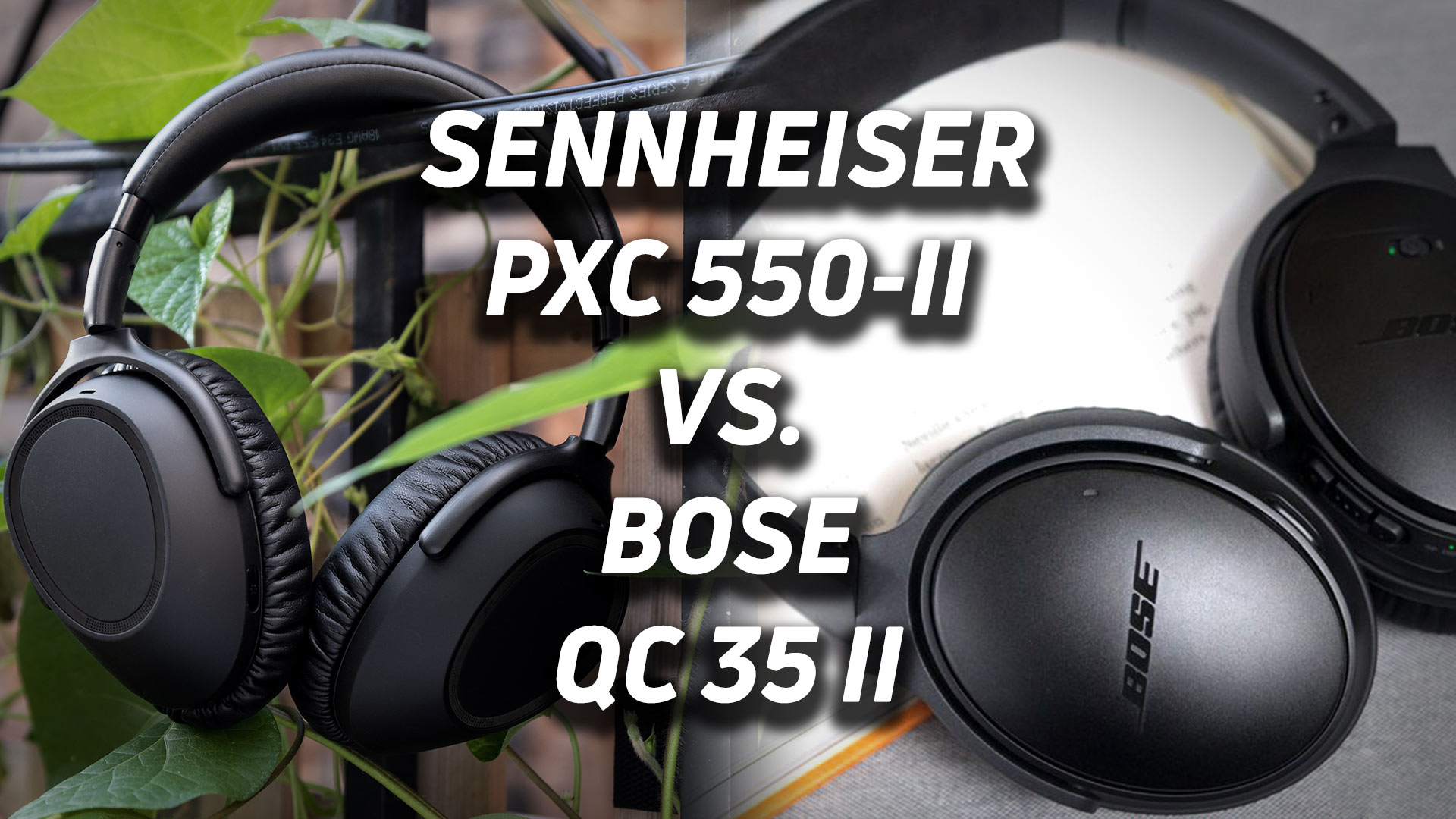
The Bose QuietComfort 35 II is a bit older than the Sennheiser PXC 550-II, but Bose’s old dog can keep up with Sennheiser’s more recent cans. Shopping for the ideal pair of headphones can be overwhelming. We want you to spend less time researching, and more time enjoying your music. Today, we’re comparing two popular noise canceling headphones from reputable brands, to see which is best for your needs.
Editor’s note: this versus article was updated on November 18, 2022, to update formatting and include the Sony WH-1000XM5 in the list of alternative products.
Is the Bose QuietComfort 35 II more comfortable than the Sennheiser PXC 550-II?
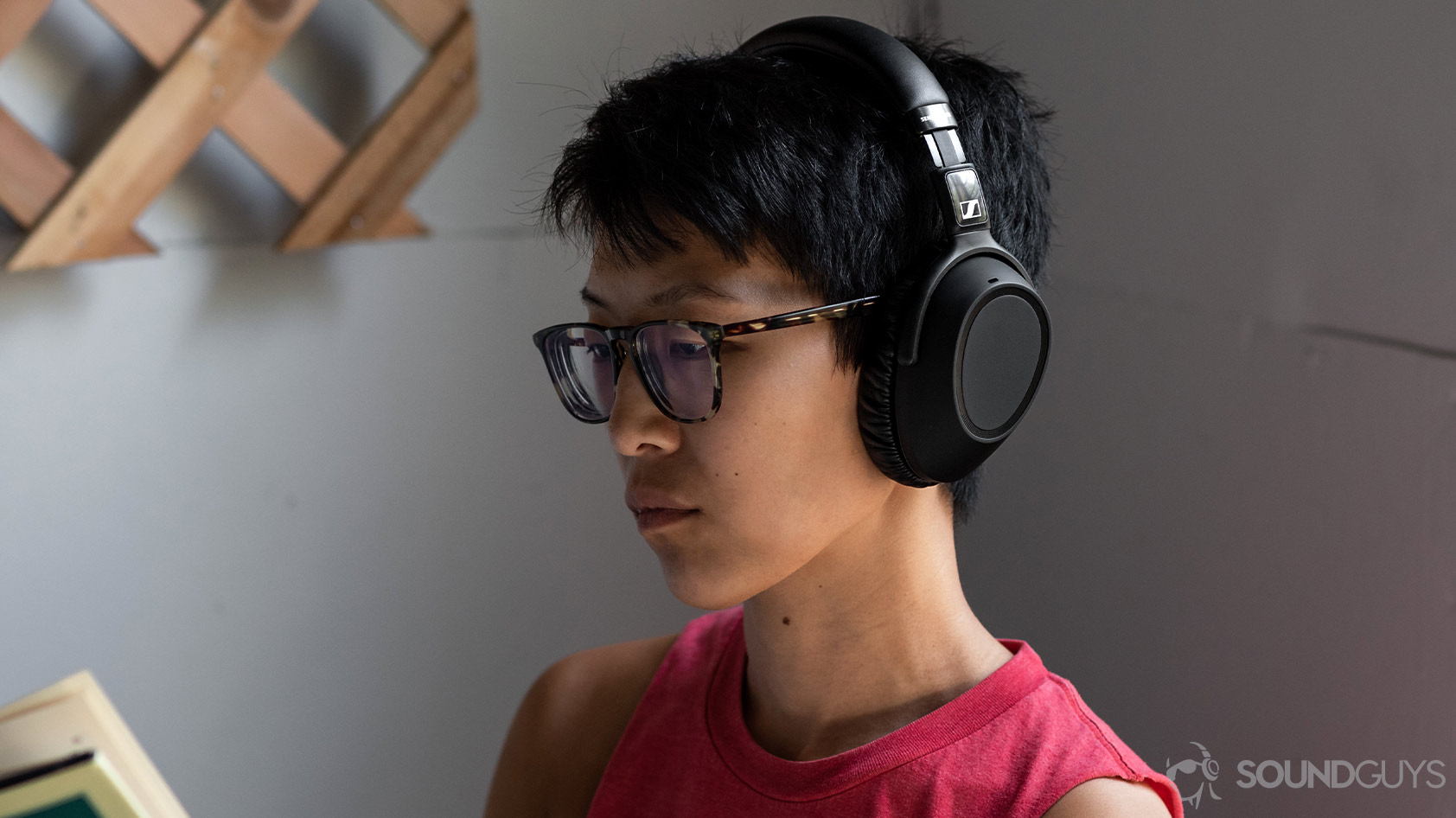
Bespectacled listeners are bound to enjoy either headset, though Bose made its name on comfort, and the QuietComfort 35 II edges out the Sennheiser PXC 550-II in that regard. Each headset has an over-ear design, but the QC 35 II gives you greater clearance for large ears compared to the Sennheiser PXC 550-II. Bose and Sennheiser’s headphones both include removable memory foam ear pads, which makes them easy to clean or replace.
Both headsets are predominantly plastic, with ear cups that rotate flat and fold towards their respective headbands. The QC 35 II relies strictly on tactile buttons to control the headset, while Sennheiser integrates buttons and a touchpad on its headphones. The PXC 550-II is free of a power button because rotating the right ear cup powers the headphones on and off.
Bose QuietComfort 35 II vs Sennheiser PXC 550-II: Which headset has better software?
![Bose QuietComfort 35 II[5] The Bose QuietComfort 35 II on a gridded surface next to two smartphones.](https://www.soundguys.com/wp-content/uploads/2017/10/Bose-QC35-II5.jpg)
With the Sennheiser PXC 550-II, you can toggle between three noise canceling settings: Mode 1, Mode 2, and off. In the Sennheiser Smart Control app, you can select which kind of ANC you want for Mode 1 (adaptive ANC or adaptive, anti-wind ANC). You can also toggle effects like smart pause, which automatically detects when the headphones are removed and pauses playback. The app also features call enhancement and smart assistant preference settings. Only Sennheiser’s Smart Control app (iOS/Android) gives you the option to make small adjustments to the sound. The Bose Connect app lacks an in-app EQ and equalizer presets altogether.
The Bose Connect app (iOS/Android) lets you find your headphones, select your preferred voice assistant, and set up the action button. You can only assign one action to the Action button: either accessing your assistant, or cycling through ANC modes, but not both. If your smartphone has a native Google Assistant, you can access it via the multi-function button on the right ear cup. You can toggle between three levels of ANC: low, high, and off.
The Bose Connect app has a more pleasing UI than the Sennheiser Smart Control app.
Bose’s app also lets you connect two headphones to one device and share audio. This is something iPhones and some Samsung devices already support, but other users will enjoy the streamlined way to share music.
What Bluetooth codecs do you get with the Sennheiser PXC 550-II, Bose QuietComfort 35 II?
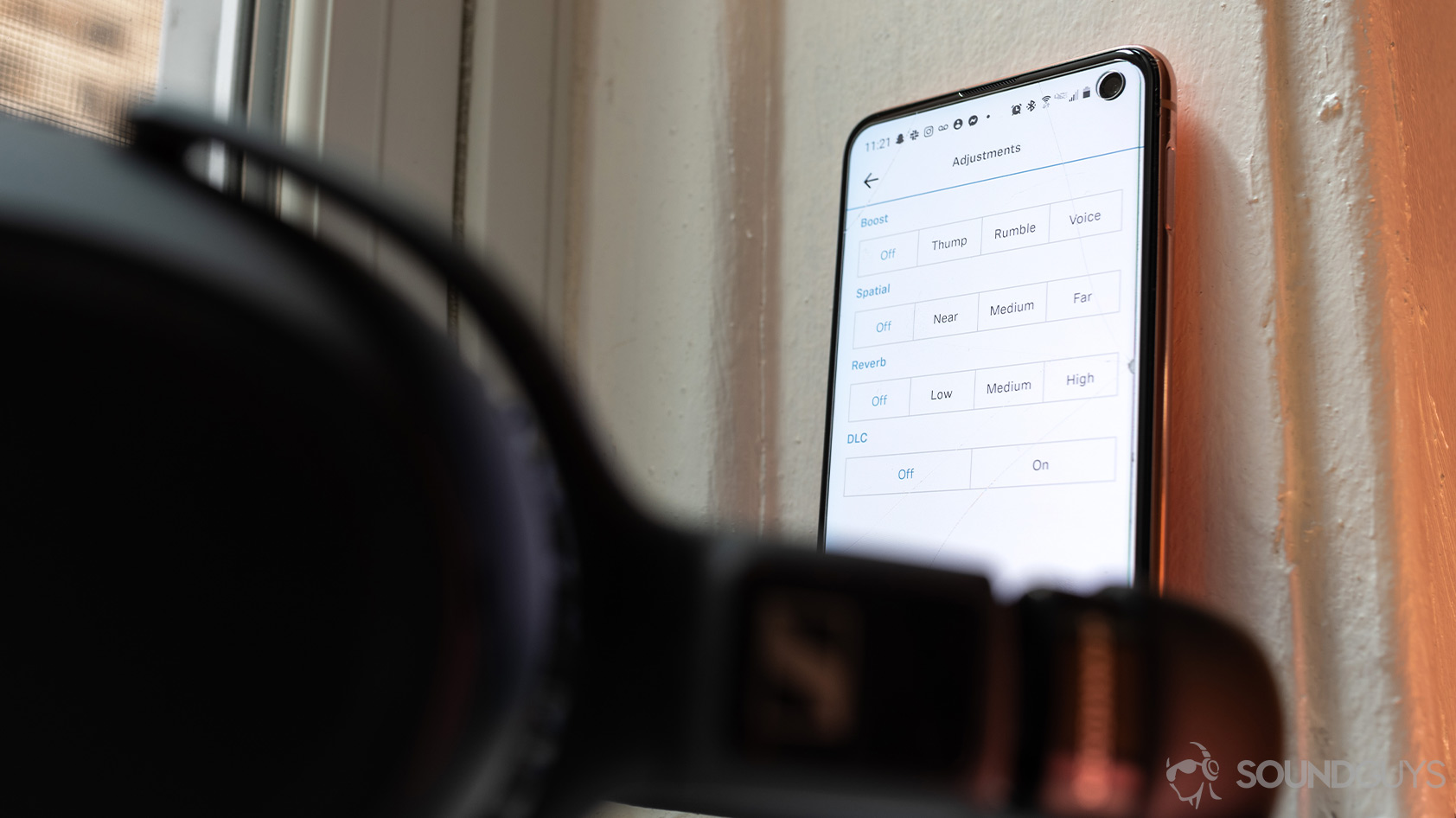
Anyone who alternates between iOS and Android devices will get more mileage with the Sennheiser PXC 550-II, because it supports a handful of high-quality Bluetooth codecs: AAC, aptX, and aptX Low Latency. All devices can stream high-quality audio to the Sennheiser headphones, which is in great contrast with the Bose QuietComfort 35 II, which only supports AAC and SBC. As is well documented, AAC performs inconsistently across Android devices, because the operating system struggles to encode the codec properly.
Both headsets support wired audio for lossless playback.
The Bose QuietComfort 35 II uses Bluetooth 4.1, which is a bit dated compared to the PXC 550-II’s Bluetooth 5.0. The main difference between these two versions is power efficiency, which the Sennheiser’s more impressive battery life demonstrates. Both headsets support multipoint connectivity, which is great for keeping an ear on incoming calls and notifications while watching TV.
The Sennheiser PXC 550-II has better battery life than the Bose QC 35 II
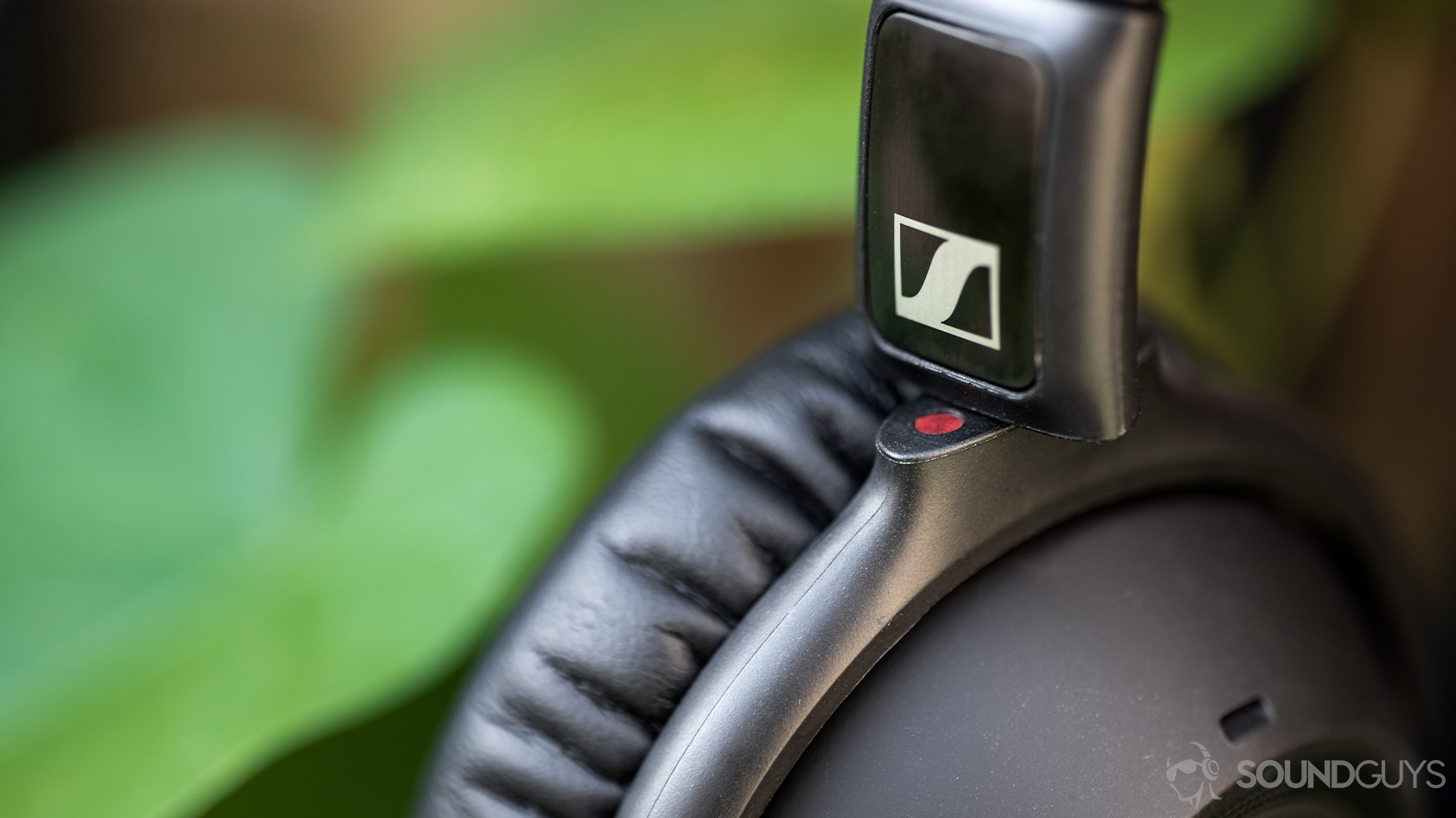
The Sennheiser PXC 550-II lasts 21 hours, 58 minutes on a single charge with ANC on its highest setting, which outperforms the Bose QuietComfort 35 II battery measurement of 21 hours, 12 minutes.
Both headsets require a microUSB cable to charge, and both support fast charging. Bose’s headset can supply 150 minutes of playtime after just 15 minutes of charging, while Sennheiser’s provides 90 minutes of playtime after a 10-minute charge. It takes just over two hours to charge Bose’s headphones, while it takes three hours to charge Sennheiser’s.
Does Bose or Sennheiser have better noise canceling?
Both headsets do a very good job of attenuating background noise, but neither is at the very top of their class compared to the Apple AirPods Max, or Sony WH-1000XM4.
The Bose QuietComfort 35 II remains one of the best noise canceling headphones around, years after its release date. Sennheiser’s ANC isn’t quite as good in the bass region, but both are effective and can protect you from noise-induced hearing loss.
Hold up! Something’s missing:
You may have noticed that our charts feature different backgrounds, that’s because the ANC and frequency response charts with dark backgrounds were made with our new Bruel & Kjaer 5128 test fixture (and the appropriate support equipment). The Sennheiser PXC 550-II still needs to be retested with this updated setup. We’ll update the charts for this comparison once we’ve made the improved sound quality measurements and ANC performance plots. It will take a while to update our backlog of old test results, but we will update this article (and many others!) once we’re able with improved microphone demos, too. These will be made obvious in each new sample which begins with the phrase, “This is a SoundGuys standardized microphone demonstration …”
Thank you for bearing with us, and we hope to see you again once we’ve sorted everything out.
Does the Bose QuietComfort 35 II sound better than the Sennheiser PXC 550-II?
If you came for good sound quality, you’ll get it from either headset.
Sennheiser and Bose’s headphones reproduce neutral-leaning frequency responses, but per our objective measurements, the Sennheiser PXC 550-II is a touch more consistent, and reproduces all notes at a more similar loudness than the Bose headset. This is visualized in the frequency charts: Bose’s headset subtly amplifies sub-bass notes, while Sennheiser’s sound signature toes the line of platonic ideal (the dotted red line) until 1kHz.
Again, both headsets do a great job reproducing music as the artists and audio engineers intended, so there’s no wrong choice. Plus, you can equalize either sound profile from your smartphone’s integrated EQ module (most modern phones have this). These neutral sound signatures are great for tinkerers, and make it easy to adjust the output of certain frequencies without introducing distortion.
Should you use the Bose QuietComfort 35 II or Sennheiser PXC 550-II for phone calls?
![Bose QuietComfort 35 II[2] The Bose QuietComfort 35 II lying on an open book.](https://www.soundguys.com/wp-content/uploads/2017/10/Bose-QC35-II2-1.jpg)
The microphone systems have very different frequency responses: Bose applies a high-pass filter to its microphone, so that low frequencies are quieter than expected. This may sound strange but it’s strategic: manufacturers do this to reduce the proximity effect, which is when bass notes are amplified too much as a speaker gets close to the microphone.
Sennheiser applies a less intense high-pass filter to the PXC 550-II, which effectively transmits accurate audio without flirting with the proximity effect. Both headsets are well equipped with excellent mics to handle your personal and professional calls.
Give each demo a listen, and vote on your favorite microphone:
Bose QuietComfort 35 II microphone demo (Ideal):
Sennheiser PXC 550-II microphone demo:
Which microphone do you think sound better?
Bose QuietComfort 35 II vs Sennheiser PXC 550-II: Which headphones should you buy?
You can’t go wrong with either headphone, but there are a few things that may sway you toward one over the other. Operating system-agnostic listeners will find the Sennheiser PXC 550-II to be a better tool, because of the vast high-quality Bluetooth codec support. However, if you want the most comfortable headphones and better ANC, the Bose QuietComfort 35 II makes more sense.

Another thing to consider: price. Typically, both headphones retail for around $300 USD, but prices are constantly in flux. When we originally reviewed the Sennheiser PXC 550-II noise canceling headphones, it was available for just shy of $200 USD. The Sennheiser PXC 550-II has since been discontinued, so it might be harder to find the product on sale now. The Bose QuietComfort 35 II currently retails for about $317 USD, depending on your preferred vendor. Be sure to consider the costs and benefits of where you buy your headphones from; some vendors have great customer service and warranty coverage while others don’t.


Compare: Bose’s best headphones vs. Sennheiser’s best headphones
What should you get instead of Sennheiser and Bose’s headphones?
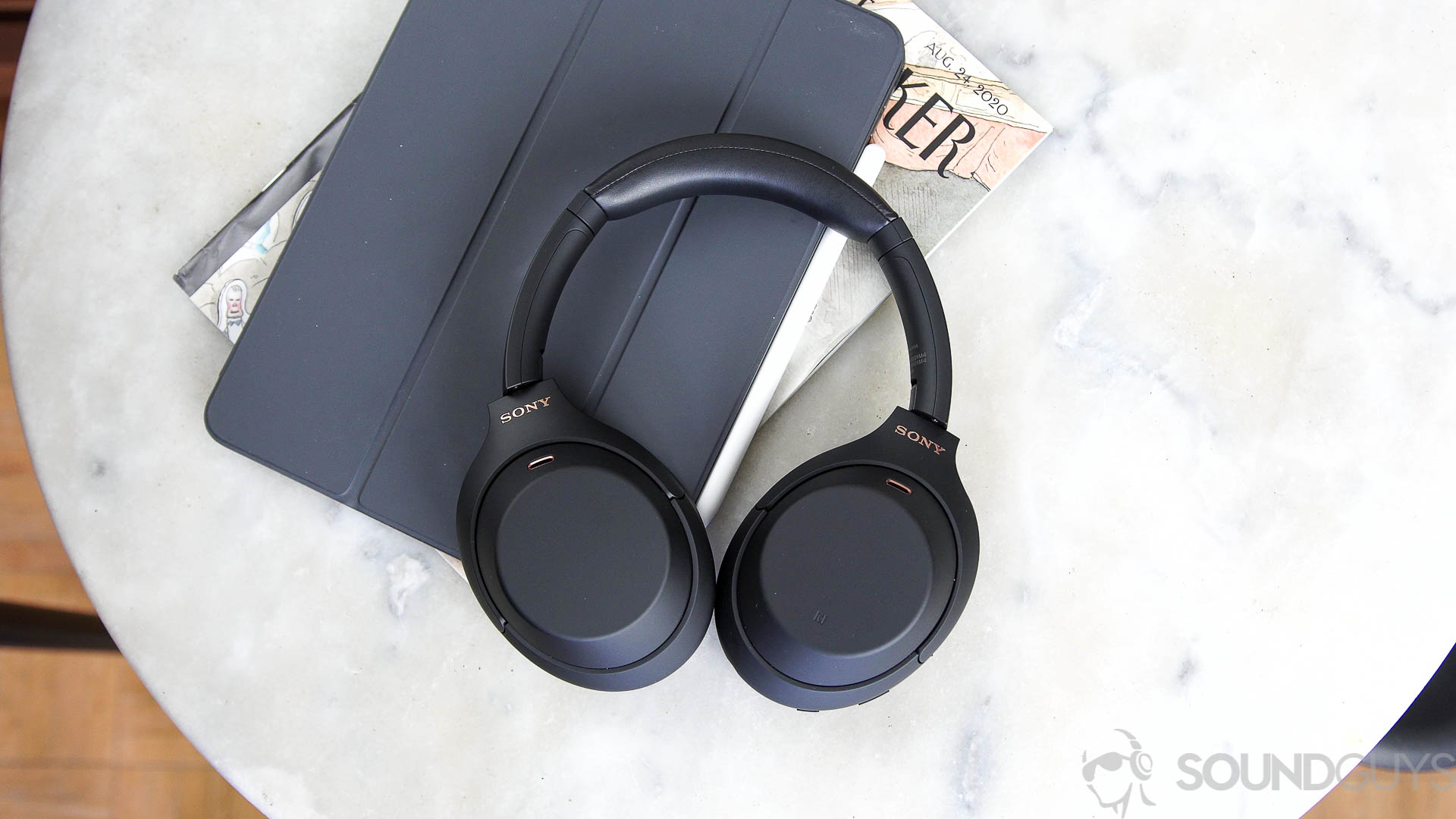
The Sony WH-1000XM4 is great for listeners willing to up their budgets. On sale, you can get it for as little as $249 USD, which is a big price drop for a recent flagship. The sound signature isn’t nearly as neutral-leaning as either headset discussed today, but you can take granular control of the EQ in Sony’s Headphones Connect app.
If you’re able to expand your budget even more, the Sony WH-1000XM5 might be within reach. Sony’s current flagship has a tamer frequency response than its predecessor, meaning less equalizing effort needed to achieve your preferred sound. What could win you over is that Sony massively improved active noise canceling in the WH-1000XM5.
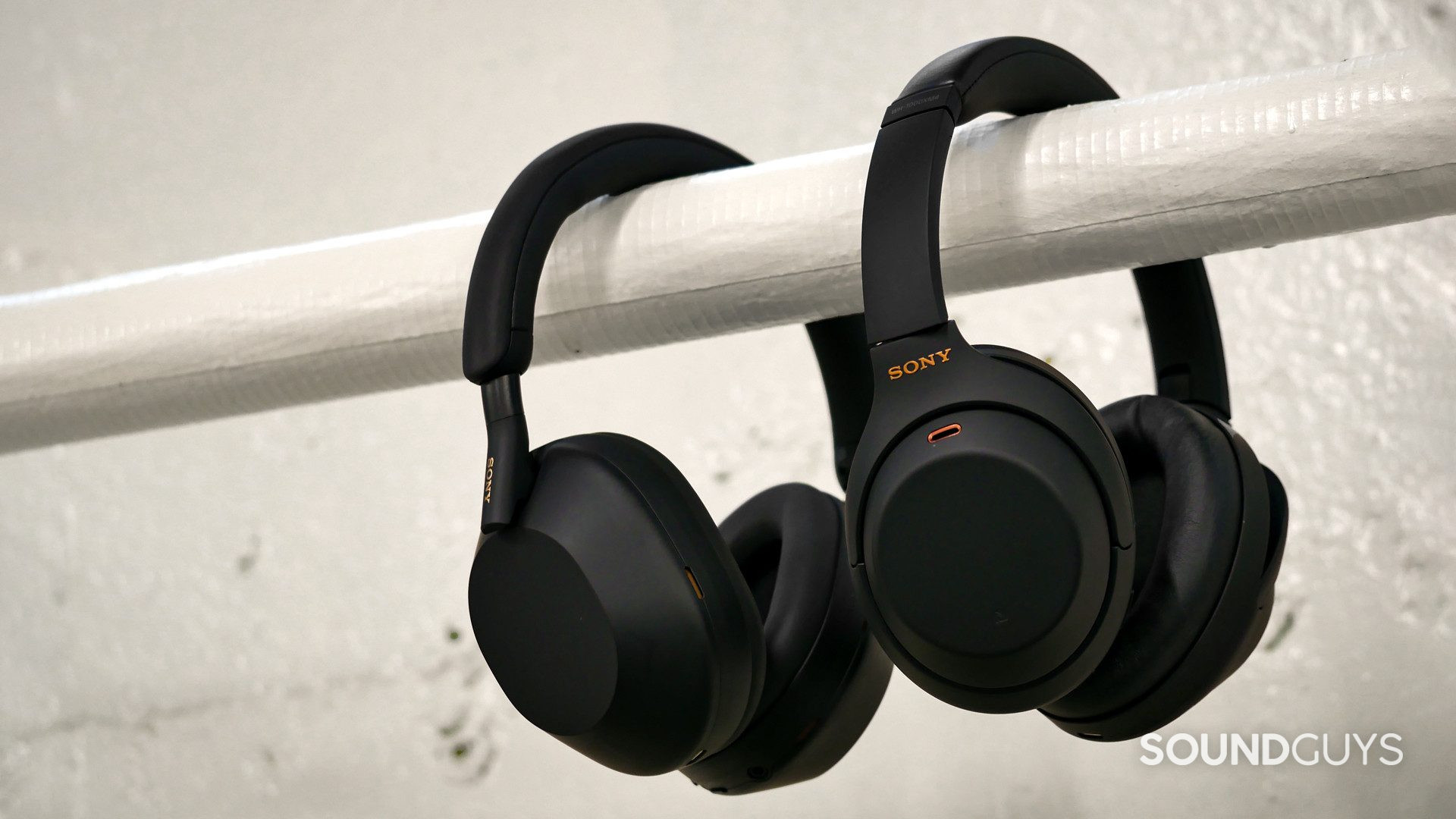
Both Sony headsets have much better noise canceling performance than the Bose QC 35 II and Sennheiser PXC 550-II, and more software features too. Even simple hardware comforts like a USB-C port is built into the Sony headsets. They’re also much cheaper than the infamous AirPods Max but offer a similarly comprehensive feature set. Read our Sony WH-1000XM4 vs Apple AirPods Max and Sony WH-1000XM5 vs AirPods Max comparisons for all the details.
Anyone deep in the Apple ecosystem will appreciate the Apple AirPods Max. This headset has the most effective active noise canceling performance we’ve ever tested here at SoundGuys, and it also sounds fantastic. What’s more, when paired to an iPhone or other Apple device, it offers an impressive set of features like Spatial Audio and Bluetooth multipoint functionality. It doesn’t have an easy option for wired listening, and its carrying case is pretty useless, but otherwise the AirPods Max is a great pair of headphones if you can foot the $549 bill.
(Click the image to expand.)
Another great noise canceling headset is the Shure AONIC 50. If you want some of the best wireless audio quality, with vast Bluetooth codec support and USB-C passthrough audio functionality, get these comfortable headphones. Then again, maybe you want to stick within Bose’s realm. If that’s the case, take a closer look at how the Bose QuietComfort 35 II compares to the Bose QuietComfort 45. The QC 45 has some of the best ANC around, but its default frequency response leaves a lot to be desired.
Frequently asked questions about the Bose QuietComfort 35 II and Sennheiser PXC 550-II
Here’s a cheat sheet for gesture controls during media playback:
- Rotate the right ear cup to turn the headset on and off.
- Press and hold the voice assistant button for four seconds to initiate pairing mode.
- Tap the touchpad once to play/pause media.
- Swipe horizontally and hold to fast forward and rewind playback.
- Swipe horizontally to skip or go to the previous track.
- Swipe vertically to increase and decrease the volume.
- Slide the ANC slider up one or two clicks to adjust noise canceling intensity.
Here is a list of gesture controls for calls:
- Tap once to accept or end a call.
- Tap and hold to reject an incoming call.
- Double-tap to place a call on hold.
- Swipe horizontally to mute or unmute the microphone.
- Swipe vertically to adjust the volume.